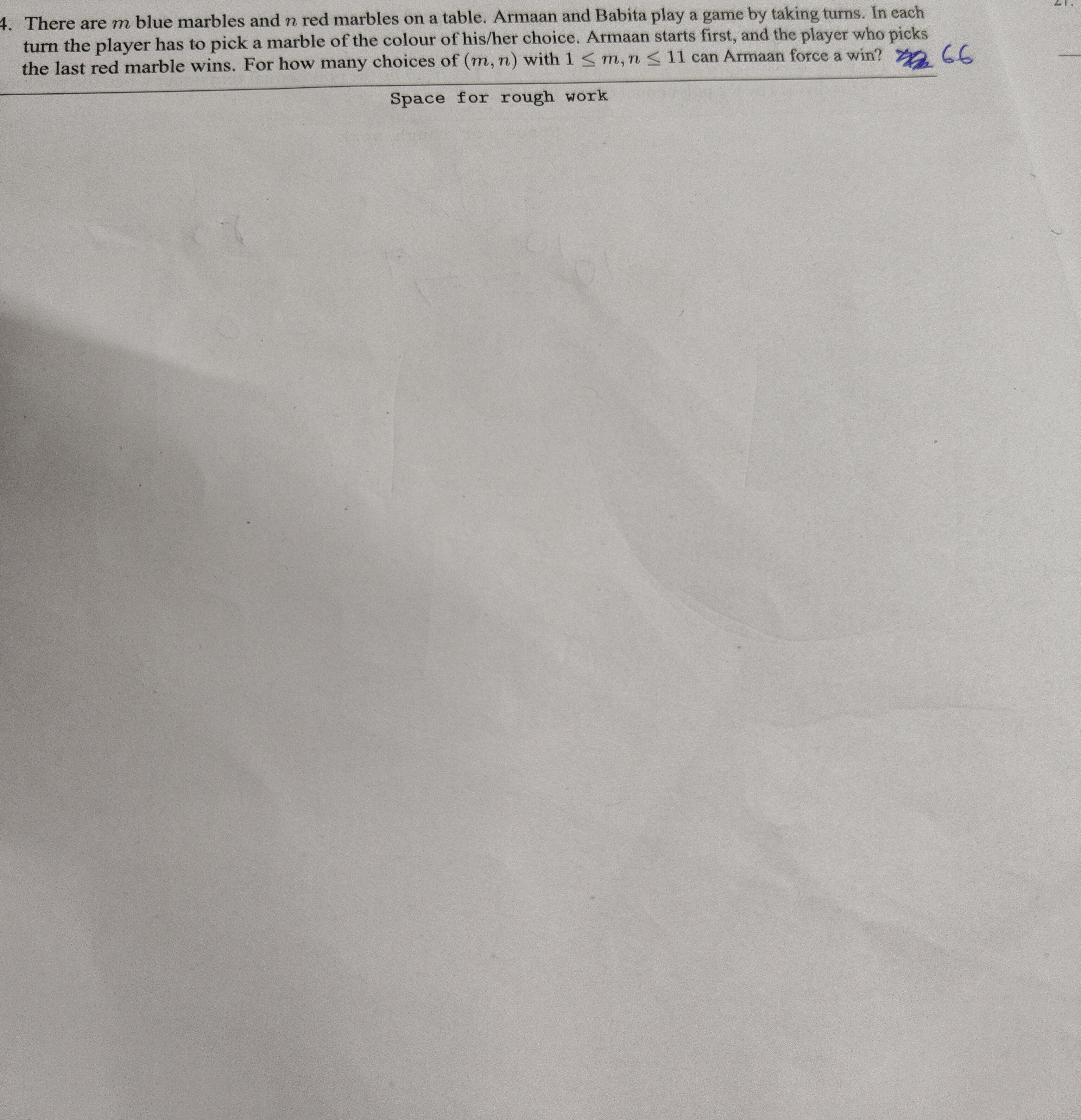Question
Question: There are $m$ blue marbles and $n$ red marbles on a table. Armaan and Babita play a game by taking t...
There are m blue marbles and n red marbles on a table. Armaan and Babita play a game by taking turns. In each turn the player has to pick a marble of the colour of his/her choice. Armaan starts first, and the player who picks the last red marble wins. For how many choices of (m,n) with 1≤m,n≤11 can Armaan force a win?

66
Solution
The game is won by the player who picks the last red marble. This is a game where players can pick either a red or a blue marble. The presence of blue marbles allows a player to "pass" their turn of picking a red marble. The crucial factor is the parity of the number of red marbles, n.
-
If n is odd: Armaan starts. He can always ensure he picks the n-th red marble. His strategy is to pick a red marble whenever it's his turn and red marbles are available. If n is odd, Armaan picks the 1st, 3rd, ..., n-th red marble. Babita picks the 2nd, 4th, ..., (n−1)-th red marble. Blue marbles don't alter this outcome as players can use them to control whose turn it is when a certain number of red marbles remain. Armaan wins.
-
If n is even: Armaan starts. If Armaan picks a red marble, n−1 (odd) red marbles remain for Babita. If Armaan picks a blue marble, n (even) red marbles remain for Babita. In any case, Babita can ensure she is the one to pick the n-th red marble. For example, if n is even, Armaan picks. If he picks red, n−1 red left. Babita picks red, n−2 red left. If Armaan picks blue, n red left. Babita picks red, n−1 red left. Babita will always be the one to pick red marbles when the count of remaining red marbles is even, thus picking the n-th red marble. Babita wins, meaning Armaan cannot force a win.
Armaan forces a win if and only if n is odd. Given 1≤m,n≤11: The odd values for n are 1,3,5,7,9,11 (6 values). For each of these 6 values of n, m can be any of the 11 values from 1 to 11. Total number of winning pairs (m,n) for Armaan = 6×11=66.
